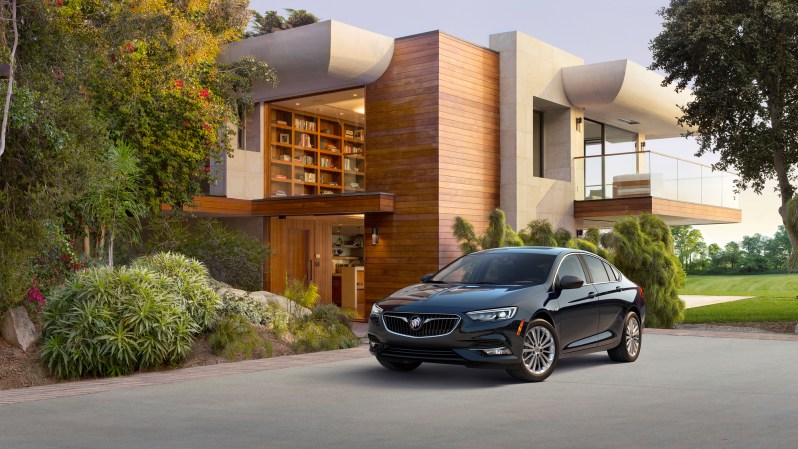Buick needs a new look about as much as Guy Fieri. After years of forgettable “luxury” cars and some terrible reliability ratings, the American automaker is attempting to right its vessel.
Buick’s Avista Concept proved the company could think radically, but without any plans for a production model, we’ve been waiting to be wowed with a real car.
Which brings us to the 2018 Regal. Gone is the underwhelming compact sedan and in its place is a pair of new body styles. Buyers will have their choice of the Regal TourX wagon (which rivals Volkswagen’s Alltrack and Subaru’s Outback) or the Regal Sportback (which shares a name and segment with Audi’s A5 Sportback).

Given Americans’ weakening appetite for sedans and interest in four door coupe-esque designs, Buick’s move makes sense, but it’s certainly a departure from the automaker’s conservative norm. Both vehicles share a sharp front end with styling cues from the all-new Lacrosse and increase utility compared to the Regal sedan predecessor. The Sportback’s gently sloping roofline and liftback trunk falls in line with the recent four-door coupe craze. The TourX butches up traditional wagon design elements with body cladding and a minor lift. Fun fact: Buick hasn’t sold a wagon since the Roadmaster in the 1990s.
Mechanically, the TourX will come standard with all-wheel drive and the Sportback will offer four driven wheels for an extra fee. A 2.0-liter turbocharged four-cylinder making 250 horsepower and 295 pound-feet of torque, paired with an eight-speed automatic, is standard in the TourX and AWD Sportback. The front-wheel drive Sportback uses the same engine, sans 35 lb-ft of torque, and a nine-speed automatic.
Both vehicles will bow at next week’s New York International Auto Show and go on sale late this year. Pricing has yet to be announced.


